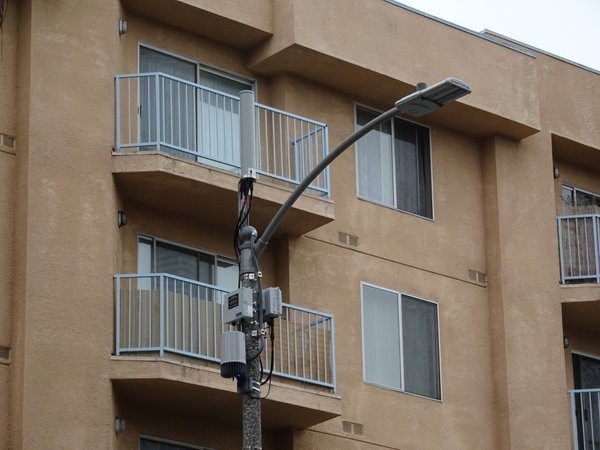T-Mobile commits to small cells as groundwork for 5G
Small cell deployments are proving to be more complex, costly and time consuming in the U.S. than they were in East Asia, but wireless carriers know they need to move forward and are slowly but surely deploying in major cities throughout the country. Verizon Wireless and Sprint have been the most vocal carriers when it comes to using outdoor small cells to densify their wireless networks. T-Mobile US said it will deploy small cells in preparation for “5G,” and AT&T Mobility has been fairly quiet about small cells since backing off initial plans to deploy 40,000 units.
Sprint last summer set a goal of deploying 70,000 small cells with hopes of completing the project within two years. Mobilitie, the company handling site acquisition and deployment for Sprint, said fewer than 2,000 have so far been deployed.
Verizon is deploying in several U.S. cities, including New York, Chicago, Atlanta and San Francisco. CFO Fran Shammo last week said it can take up to two years to acquire sites and complete a deployment.
“It is about a 24-month period of time by the time you get a location, you negotiate with the landlord, you get the fiber to that location, because every single one of our small cells has fiber backhaul to a macro cell,” Shammo said.
Mobilitie said it is not using fiber for every small cell and will at times rely on wireless backhaul. Mobilitie CEO Gary Jabara said the backhaul decision is driven by availability and cost, and that in some situations fiber is too costly.
“If it’s cost-effective to micro-trench fiber to a particular small cell site, then people do it and we’ll do it, and then if it’s cost prohibitive, then you basically microwave, and then you have to microwave back to an adjacent location that’s got fiber because you’re always building rings,” Jabara said. “The big issue with backhaul is when you kind of step back and look at it as a line item on your [general and administrative expenses] if you’re a carrier. Sprint’s probably better than anybody, or certainly as good as anybody, at doing a great job at saving an inordinate amount of capital with new backhaul kinds of solutions, whether its their own dark fiber or it’s wireless … there’s a lot of ways to drive cost out of backhaul.”
Dave Mayo, T-Mobile US’ SVP for technology strategy, finance and development, told an audience at WIA’s Wireless Infrastructure Show, the company is just beginning to evaluate small cell deployments.
“We’re beginning to think about and do some small cell work in some of the big metropolitan areas, and I think we need to do that just to begin to build our muscle,” Mayo said. “You could argue today I could do nothing but sector splits and cell splits for the next couple of years and probably be fine, but we need to get the small cells in ahead of 5G. … We’ve got to industrialize the process because it’s going to be required for 5G.”
Mayo took an audience question about Sprint’s wireless backhaul strategy, and said T-Mobile US will rely primarily on fiber.
“I’ve had a pretty good career not following what Sprint does,” said Mayo. “It’s not that there’s anything wrong with what they’re doing. … That’s not to say there aren’t applications for microwave, but by and large in the metropolitan areas our first choice is fiber.”
Mayo also named access to public rights of way for small cell deployments as a “pain point” for T-Mobile US, and said he is concerned about the relationships between carriers and municipalities.
“We’ve got to find a way to work with municipalities such that we can get quick access and industrialize our ability to deploy small cells,” said Mayo. Mayo said he is concerned that some companies are being “a little too cavalier in some instances and messing up our ability to deploy small cells.”
More on outdoor small cells:
Case studies feature report
Webinar featuring Verizon Wireless, Mobile Experts, JMA Wireless and SOLiD
Image source: Jonathan Kramer

